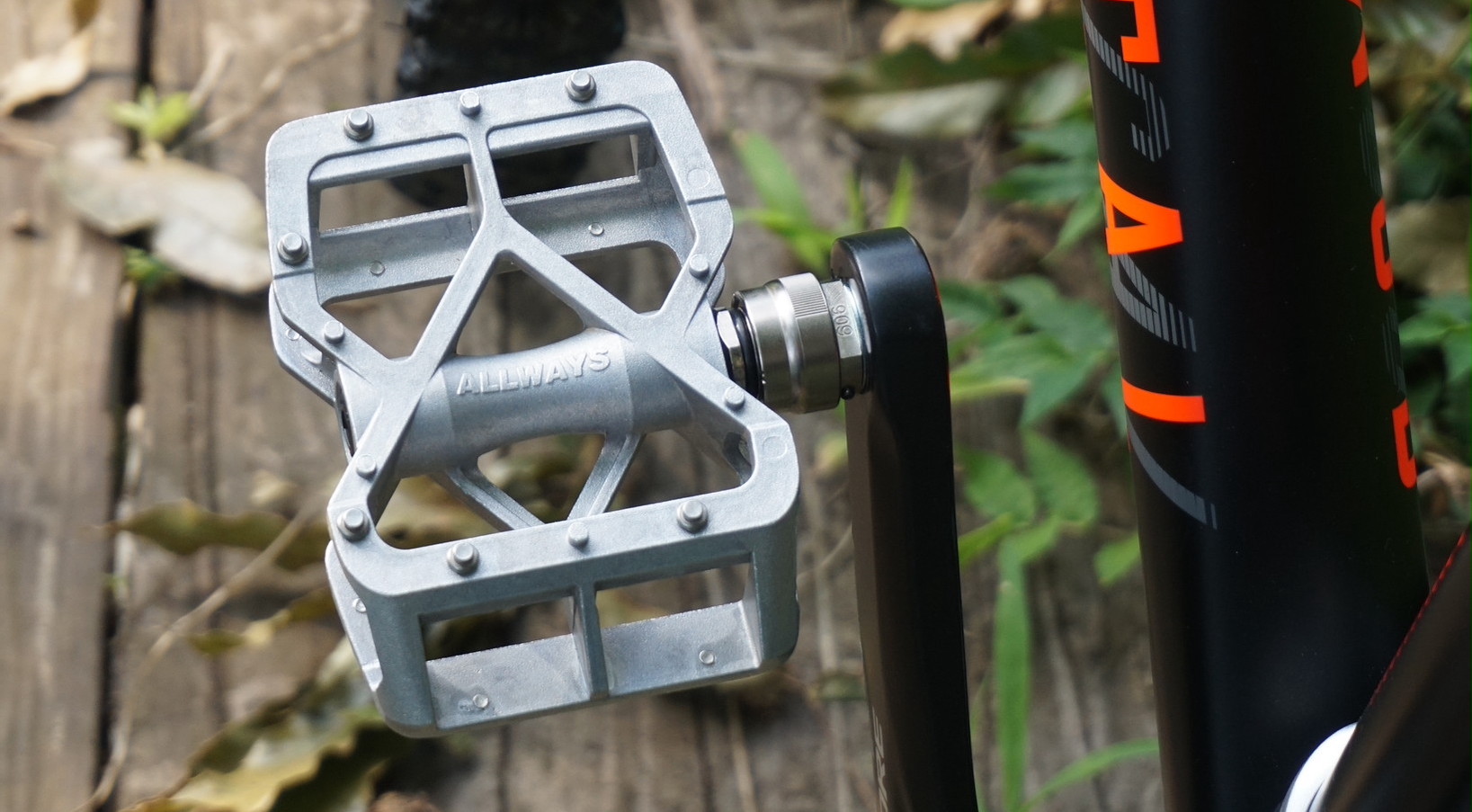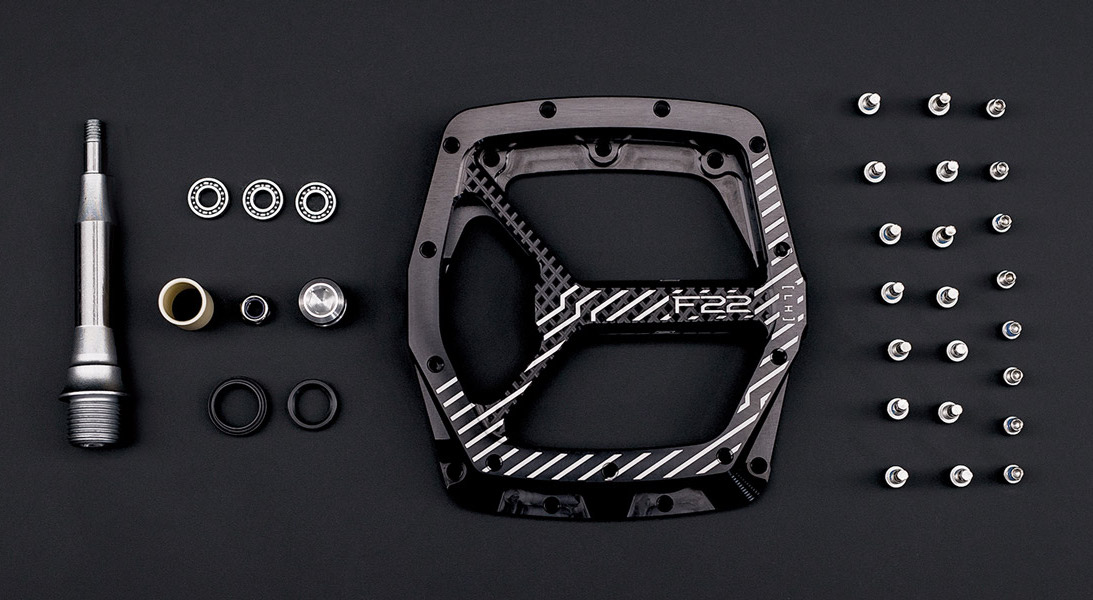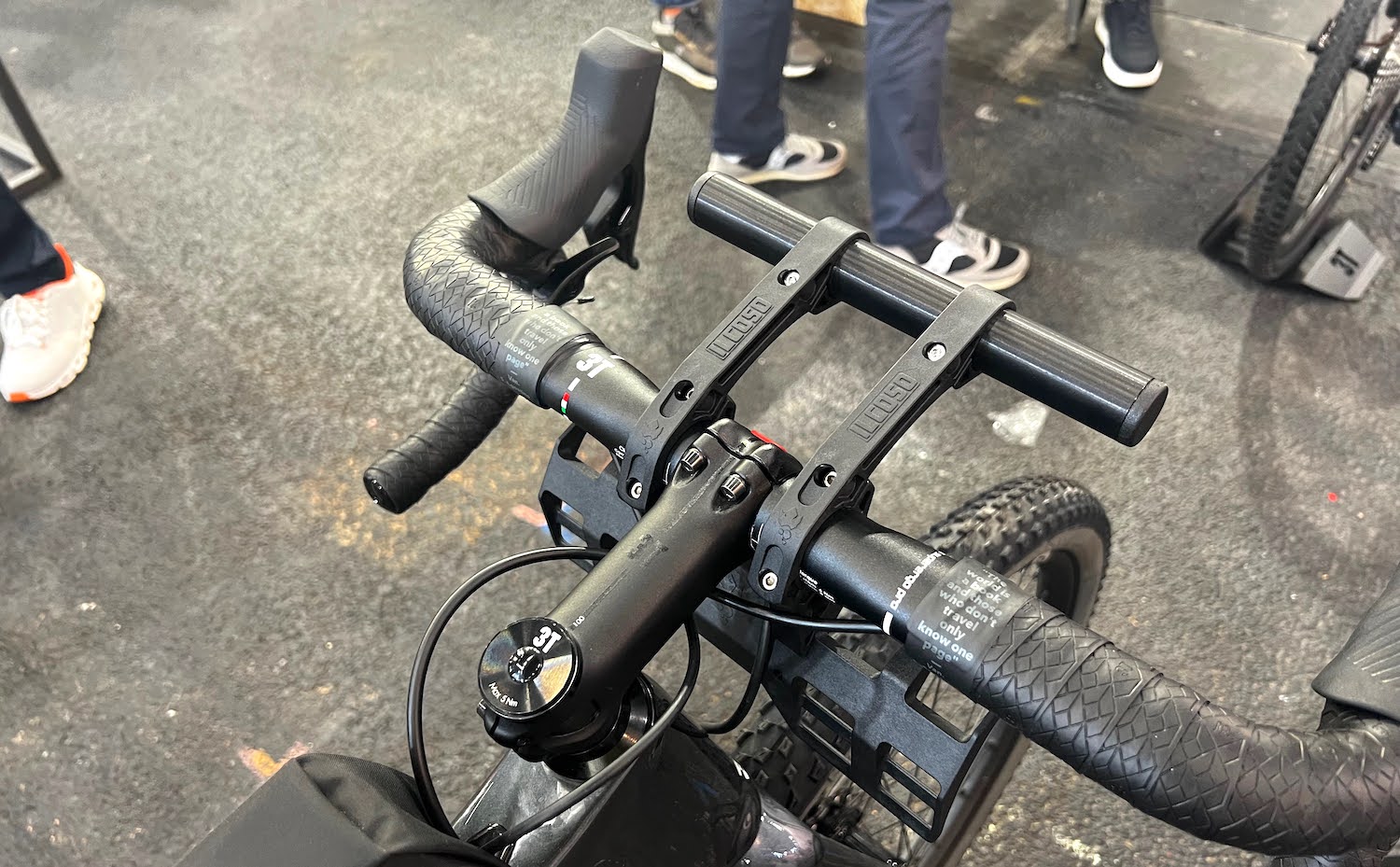Table of Contents
- What Are The Specs of the Cane Creek Invert Fork?
- What is the Benefit of an Inverted Suspension Fork Design?
- Aren’t Inverted Suspension Fork Stanctions Susceptible to Damage?
- How is the Cane Creek Invert Fork Manufactured?
- What is the Suspension Travel of the Cane Creek Invert?
- How Much Does the Invert Gravel Fork Weigh Compared to Other Forks?
- Does the Invert Gravel Suspension Fork Have A Lock Out Switch?
- Why Does The Invert Have No Damper?
- Can You Ride The Invert Fork On Singletrack?
- Does the Cane Creek Invert Top Out?
- How Do You Change the Spring Rate?
- Are There Any Other Adjustments You Can Make?
- What is the Price of the Cane Creek Invert Suspension Fork?
- What is the Maximum Rider Weight?
- Does the Cane Creek Invert Gravel Fork Require Servicing?
- What’s the Warranty on Cane Creek Suspension Forks?
- Where is the Cane Creek Invert Manufactured?
- What’s The Axle-To-Crown Length of the Invert Fork?
- What Gravel Bikes Are Suspension-Corrected For the Invert Fork?
- What Gravel Frames Fit the Invert Fork?
- When Will The Cane Creek Invert Be Available?
The Cane Creek Invert is an upside-down gravel suspension fork that’s been tuned specifically for fast gravel roads.
It has been designed by Cane Creek to be especially active over high-frequency dirt road chatter, which should smoothen out surface variations, and result in you enjoying bumpy roads that little bit more.
While the main purpose of the Invert is to improve the comfort and control of a gravel bike, it also has a better aesthetic compared to most gravel suspension forks available. The Invert’s thicker shape at the crown blends into the head tube, and the thinner shape at the bottom blends nicely into the dropouts.
Today, we’ll be covering all aspects of this unique carbon fork in a series of frequently asked questions.
What Are The Specs of the Cane Creek Invert Fork?
- Wheel Size: 700C
- Spring Type: Air
- Offset: 45mm
- Thru Axle: 12 x 100mm
- Weight: 990 to 1,113 grams
- Suspension Travel: 30 or 40mm
- Axle to Crown: 425 or 435 mm
- Steerer Tube Size: Tapered 1-1/8″ to 1-1/2”
- Brake Rotor: Flat Mount 160mm, or 180mm with an adapter
- Maximum Tire Width: 50mm (2.0”) with 6mm of clearance on either side
What is the Benefit of an Inverted Suspension Fork Design?

Inverted suspension forks can have a very high stiffness-to-weight ratio because the thickest and stiffest portion of the fork is located where leverage is greatest – near the head tube.
In addition, the seals and bushings are located at the bottom of the upper legs, which means they are always sitting in oil. This keeps things running smoothly, and the upside-down design also ensures that gravity can’t work any grit inside the sliding components.
There’s also less unsprung mass with inverted forks. This means that the section of the fork that’s constantly moving up and down is as light as possible, resulting in the fork being extra responsive to bumps.
An upside-down fork also has a better aesthetic for modern gravel bikes. Most gravel suspension forks look like trimmed-down mountain bike forks. In contrast, the Invert’s thicker shape at the top blends into the head tube, and the thinner shape at the bottom blends into the dropouts. It’s certainly more elegant than most suspension forks (except for the HiRide Sterra).
Aren’t Inverted Suspension Fork Stanctions Susceptible to Damage?
The stanchions are low to the ground and could be susceptible to damage should you fall sideways onto a rock. But the official word from Cane Creek is that they never had a single instance of scratching through the development process.
How is the Cane Creek Invert Fork Manufactured?

The structure itself is quite impressive.
To keep the fork less than one kilogram (2.2lbs), the fork uppers consist of a massive carbon fibre crown and steerer, which are both stiff and lightweight. The carbon components are then bonded to two aluminum upper legs post-molding. Aluminium is used in this instance to get the machining to the necessary manufacturing tolerances.
The fork lowers (stanctions and dropouts) are forged and machined out of single pieces of aluminium.
What is the Suspension Travel of the Cane Creek Invert?
The Invert has different suspension travel, depending on the model you choose:
Cane Creek Invert CS – 40mm travel
Cane Creek Invert SL – 30mm travel
Unfortunately, you must decide what travel amount you want at the time of purchase as both forks use different lengths of air springs.
How Much Does the Invert Gravel Fork Weigh Compared to Other Forks?

The Invert SL is 990 grams (2.2 lbs), which is just 470 grams (1 lb) heavier than a rigid carbon fork of similar length. With its longer travel and lockout switch, the Cane Creek Invert CS weighs in at 1,113 grams (2.5 lbs).
To put these numbers in perspective, here are some other suspension fork weights:
Lauf Grit SL – 960 grams
Cane Creek Invert SL – 990 grams
Cane Creek Invert CS – 1,113 grams
Fox 32 TC – 1,226 grams
HiRide Sterra – 1,300 grams
Rockshox Rudy – 1,317 grams
Cannondale Lefty Oliver – 1,340 grams
KS GTC – 1,385 grams
MRP Baxter – 1,420 grams
State All-Road – 1,600 grams
SR Suntour GVX – 1,628 grams
Does the Invert Gravel Suspension Fork Have A Lock Out Switch?

The Cane Creek Invert CS has a button at the crown that engages a firmer suspension setting. This is not a hard lockout, it just firms things up a lot.
It’s worth noting that it’s not possible to add a climbing switch to the SL as the fork upper is different.
Why Does The Invert Have No Damper?
The Cane Creek Invert doesn’t use a damper as it’s (a) short travel, and (b) primarily designed for non-technical terrain.
Suspension dampers control the speed at which your front wheel moves up or down. They prevent oscillations and movements by dissipating energy from the spring inside the fork.
Dampers tend to be essential on long-travel suspension forks (eg. 140mm) but are not strictly necessary with short-travel forks. In fact, when a fork doesn’t use a damper, you (the rider) can function as the damper on moderately rough, non-technical terrain.
Our Comfort Lab tests consistently find that the least-damped products are usually the most effective at reducing high-frequency vibration over fast, repetitive bumps. This is because the spring can move up and down almost unimpeded when there is no damper, maximising rider comfort at the handlebar.
The best comfort-improving products we’ve tested include the Kinekt suspension stem (no damping) and Specialized FutureShock (minimal damping).
Can You Ride The Invert Fork On Singletrack?

The downside to not having a damper is that the fork cannot remove as much energy after bigger impacts. This alone makes this fork better for gravel roads rather than bumpy singletrack trails.
You can expect this fork to feel a bit less ‘planted’ on rougher terrain compared to a suspension fork with a damper.
Does the Cane Creek Invert Top Out?
BikeRumor reports that after bunny hopping over an obstacle the “fork rebounds at full speed” and that they could “hear and feel the top out”. It didn’t seem to be a big deal to them, but it was “definitely noticeable”.
How Do You Change the Spring Rate?

You can change the spring rate using a standard shock pump. Cane Creek recommends starting with 95% of your body weight (lbs/psi). That means a 200 lb rider would require 190 psi.
Are There Any Other Adjustments You Can Make?
There is no compression or rebound speed adjustment. But you can adjust the progressivity of the spring.
Three volume spacers can changed inside the fork depending on how quickly you want the firmness to ramp up before the fork bottoms out. These should be changed per the surface roughness of the roads you ride, and your riding style.
More aggressive riders will likely want more volume spacers for more progressivity.
What is the Price of the Cane Creek Invert Suspension Fork?

Invert CS with the climb switch and 40mm travel: US $1,199 / AU $2,034 / £1,200 / €TBC
Invert SL with no climb switch and 30mm travel: US $1,099 / AU $1848 / £1,100 / €TBC
What is the Maximum Rider Weight?
You can weigh up to 113kg/250lbs and use the Cane Creek Invert suspension fork.
Does the Cane Creek Invert Gravel Fork Require Servicing?
The Invert requires regular maintenance like most suspension forks.
Cane Creek recommends replacing the oil inside the fork every 50 hours of use. This can be done at home with a basic 12-notch, 46mm bottom bracket spanner tool (Race Face Cinch or SRAM DUB). The service procedure involves draining the oil and wiping everything clean, which supposedly takes minutes. Each leg requires just 5 ml of 15 wt oil.
Every 100 hours Cane Creek recommends a full rebuild. This must be done by Cane Creek, or at one of their service centres located all around the globe.
What’s the Warranty on Cane Creek Suspension Forks?
The warranty lasts two years from the date of purchase, and it covers materials and workmanship. Like other suspension products, by not performing regular services you can void the warranty.
Where is the Cane Creek Invert Manufactured?
Production parts are made in Taiwan before being sent back and assembled at their facility in Fletcher, North Carolina (USA).
What’s The Axle-To-Crown Length of the Invert Fork?

This fork is longer than many carbon rigid gravel forks.
The Axle-to-Crown (ATC) is 425mm for the Invert SL (30mm travel) and 435mm for the Invert CS (40mm travel).
If you install Invert on a bike with an ATC of less than 420mm, be aware that the fork will raise the front end of the bike, shorten the effective reach to the handlebars, and slacken the head tube angle.
If your bike has a very low ATC (less than 400mm), the Invert SL will affect your bike’s geometry less as it’s the shortest-length fork.
What Gravel Bikes Are Suspension-Corrected For the Invert Fork?
For a list of suspension-corrected gravel bikes, click HERE.
What Gravel Frames Fit the Invert Fork?

The Cane Creek Invert fork fits gravel frames with a standard tapered 1-1/8” to 1-1/2” fork. Most gravel bikes in 2024 are compatible with standard tapered forks.
When Will The Cane Creek Invert Be Available?
Cane Creek says the Invert fork will be available from June/July 2024.







